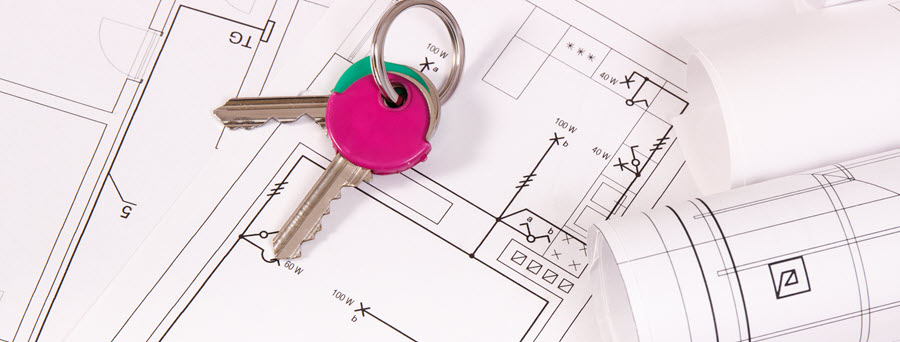Navigating the landscape of mortgage rates can be a daunting task for potential homeowners. Understanding…
Who Pays Closing Costs and Loan Program Restrictions
When it comes to residential real estate transactions, closing costs can often seem like a confusing maze of fees and charges. Knowing who typically pays what and understanding the restrictions certain loan programs impose on closing costs is crucial for both buyers and sellers. Moreover, it’s essential to recognize that closing costs can be negotiated, providing opportunities for saving money and avoiding unnecessary expenses.
Who Typically Pays What?
- Buyer’s Closing Costs:
Buyers usually bear the brunt of the closing costs, which can range between 3% and 5% of the property’s purchase price. The costs typically covered by the buyer include:
- Loan Origination Fees: Charged by the lender for processing the new loan.
- Appraisal Fees: Cost of appraising the value of the property to ensure it’s worth the sale price.
- Credit Report Fees: Charged for pulling the buyer’s credit report.
- Underwriting Fees: Paid to the lender for evaluating the loan application.
- Home Inspection Fees: For inspecting the property’s condition.
- Title Insurance: Protects the buyer in case of title disputes.
- Escrow Deposits: Funds held in reserve for property taxes and insurance.
- Recording Fees: Charged by the county to record the new deed.
- Survey Fees: For verifying property boundaries.
- Seller’s Closing Costs:
Sellers typically cover fewer costs, but their total can still be substantial, usually ranging between 1% and 3% of the property’s sale price. Sellers are generally responsible for:
- Agent Commissions: Typically, 5%-6% of the sale price, split between the buyer’s and seller’s agents.
- Title Transfer Fees: Charged for transferring the property’s title to the buyer.
- Property Taxes: Prorated share of the annual property tax.
- Home Warranty: If agreed, the seller might provide a home warranty for the buyer.
- Escrow Fees: Charged by the company facilitating the closing.
- Any Outstanding Liens or Assessments: Sellers must clear any outstanding debts against the property.
Loan Program Restrictions on Closing Costs
Different loan programs have varying restrictions and guidelines regarding closing costs. Understanding these nuances is pivotal for buyers to ensure a smooth transaction.
- FHA Loans:
Federal Housing Administration (FHA) loans are popular for their low down payment requirements. However, they have strict regulations on closing costs:
- Allowable Charges: FHA loans have a detailed list of allowable charges. Non-allowable fees cannot be charged to the buyer.
- Contribution Limits: Sellers can contribute up to 6% of the sale price towards the buyer’s closing costs, but not more.
- VA Loans:
Veterans Affairs (VA) loans offer numerous benefits to eligible veterans, including no down payment. But they also come with specific restrictions:
- Non-Allowable Fees: Like FHA loans, VA loans have a list of non-allowable charges that cannot be passed to the buyer.
- Seller Concession Limit: Sellers can pay all of the buyer’s loan-related closing costs and up to 4% in concessions, which can cover paying off debts, property taxes, and insurance.
- Conventional Loans:
Conventional loans, not backed by government agencies, tend to have more flexibility, but guidelines may vary by lender:
- Lender Fees: There’s more room for negotiation on lender fees with conventional loans.
- Seller Contributions: Depending on the down payment, sellers can contribute between 3% and 9% towards the buyer’s closing costs.
- USDA Loans:
United States Department of Agriculture (USDA) loans, aimed at promoting homeownership in rural areas, also have their unique guidelines:
- Finance Closing Costs: In some cases, closing costs can be included in the loan if the home appraises higher than the sales price.
- Seller Contributions: There’s no official limit, but contributions should be reasonable and customary for the area.
Negotiating Closing Costs
Given the variability and complexity of closing costs, there’s considerable room for negotiation. Both buyers and sellers can employ several strategies to reduce these costs:
- Compare and Shop Around:
Buyers should compare loan estimates from different lenders and negotiate fees. Shopping around for services like home inspections, surveys, and title insurance can also yield savings.
- Negotiate Seller Contributions:
Buyers can negotiate with sellers to contribute towards closing costs. However, this might be reflected in the property’s sale price.
- Lender Credits:
Some lenders offer credits to offset closing costs in exchange for a higher interest rate on the mortgage, which can be beneficial depending on the buyer’s financial situation.
- Closing at the End of the Month:
Scheduling the closing at the end of the month can reduce the per diem interest charges, thereby lowering the amount due at closing.
- Requesting Subsidies:
In some cases, buyers might be eligible for local or state subsidies, grants, or assistance programs that can help reduce closing costs.
- Reviewing the Closing Disclosure:
Buyers should carefully review the closing disclosure and question any unexpected or unusual fees. Mistakes can happen, and catching them before closing can save money.
Conclusion
Understanding and navigating closing costs is a critical aspect of any residential real estate transaction. By being aware of who typically pays what, acknowledging the restrictions imposed by different loan programs, and employing negotiation strategies, both buyers and sellers can demystify the process and potentially make substantial savings. The key is to be informed, proactive, and unafraid to question and negotiate fees to ensure a fair and smooth property transaction.






